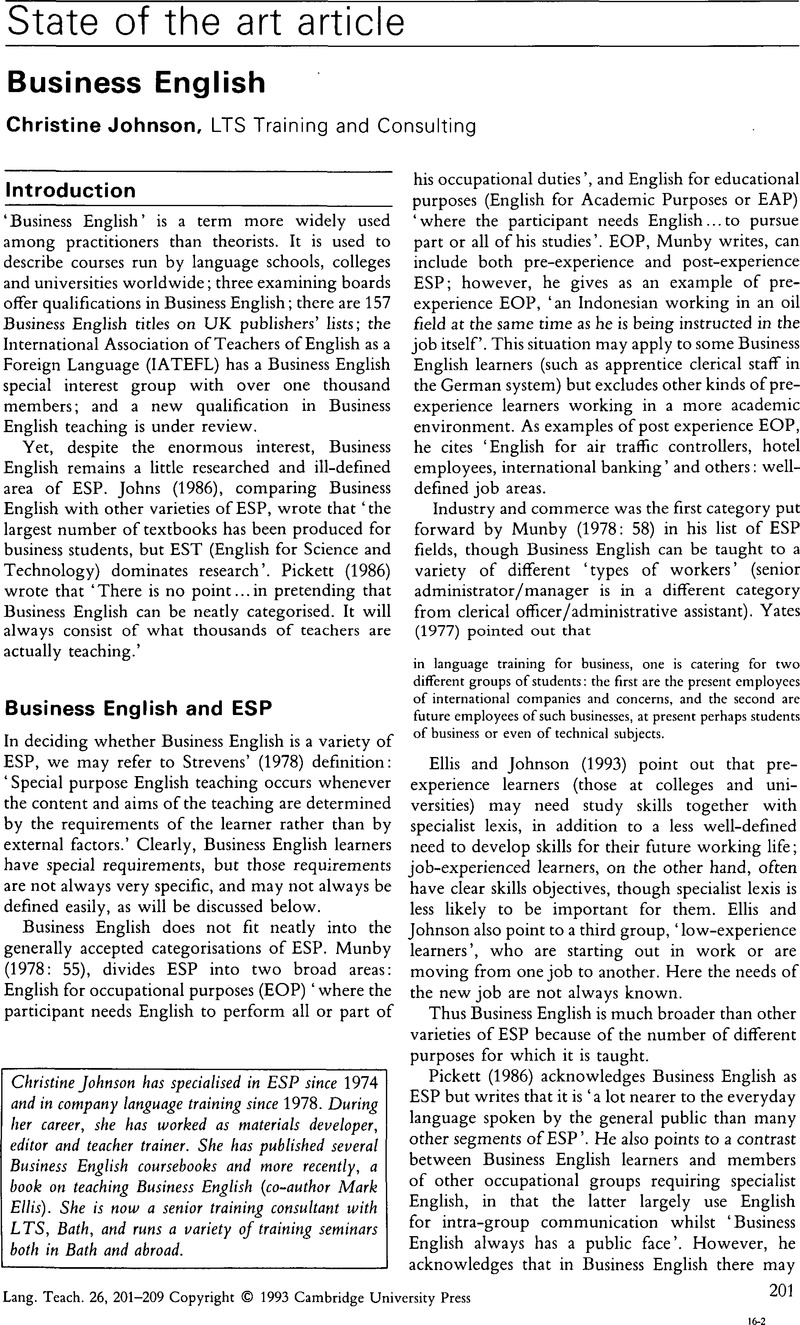Crossref Citations
This article has been cited by the following publications. This list is generated based on data provided by Crossref.
Wilson, John P.
1995.
Teaching business english.
English for Specific Purposes,
Vol. 14,
Issue. 2,
p.
181.
St John, Maggie Jo
1996.
Business is booming: Business English in the 1990s.
English for Specific Purposes,
Vol. 15,
Issue. 1,
p.
3.
VIAN JR., Orlando
1999.
Inglês instrumental, inglês para negócios e inglês instrumental para negócios.
DELTA: Documentação de Estudos em Lingüística Teórica e Aplicada,
Vol. 15,
Issue. spe,
p.
437.
Sifakis, N.C.
2003.
Applying the adult education framework to ESP curriculum development: an integrative model.
English for Specific Purposes,
Vol. 22,
Issue. 2,
p.
195.
Chi, Do Na
2023.
Benefits of Implementing Project-Based Learning in An English for Business Course.
Journal of Ethnic and Cultural Studies,
Vol. 10,
Issue. 3,
p.
55.
Lasekan, Olusiji Adebola
Moraga-Pumarino, Ana Fabiola
and
Pachava, Vengalarao
2023.
Using Needs Analysis to Foster Sustainability of Business English Courses: A Case Study of a University in the South of Chile.
Sustainability,
Vol. 15,
Issue. 22,
p.
16074.
Chi, Do Na
and
Vu, Ngoc Tung
2024.
English Language Education for Graduate Employability in Vietnam.
p.
259.



